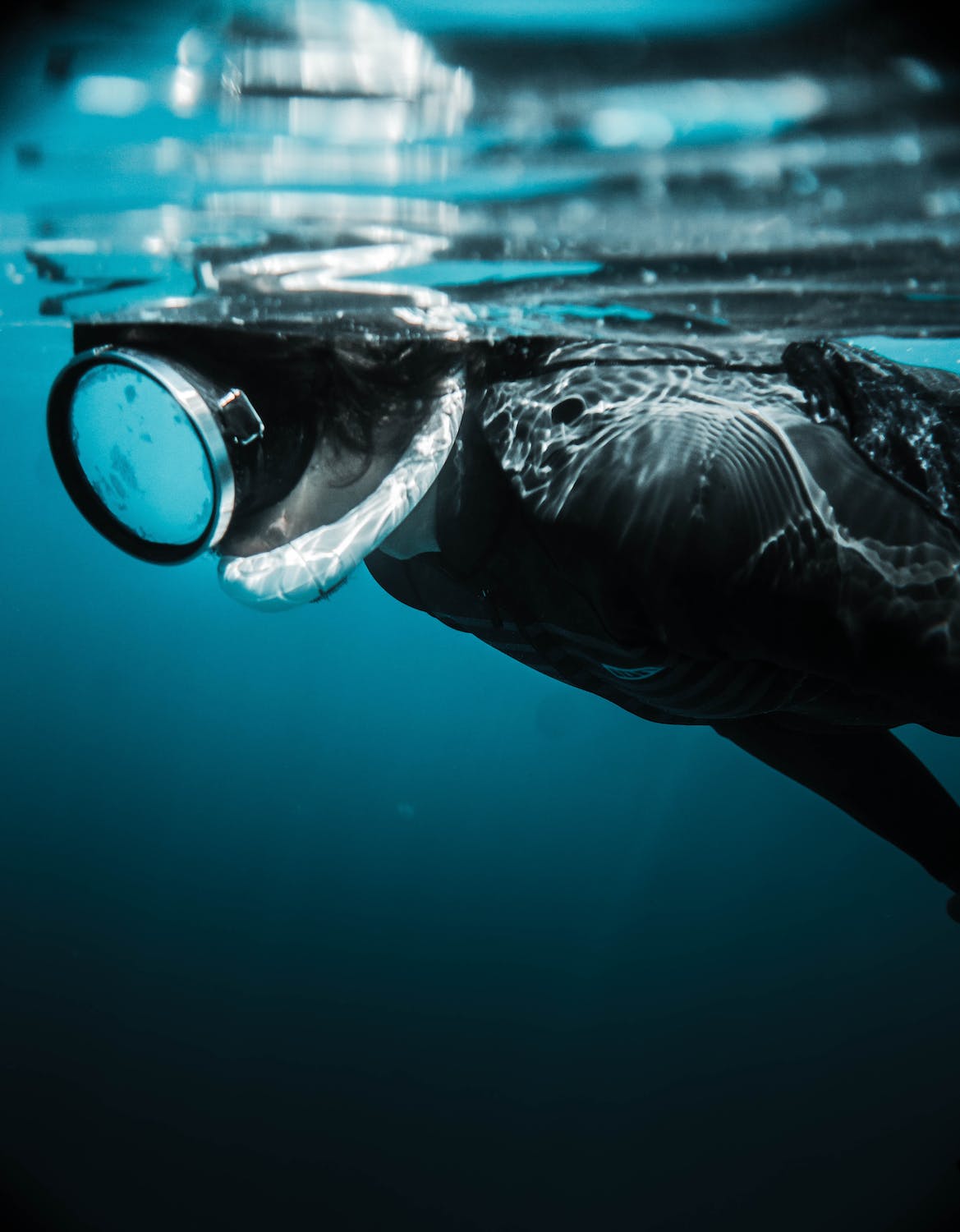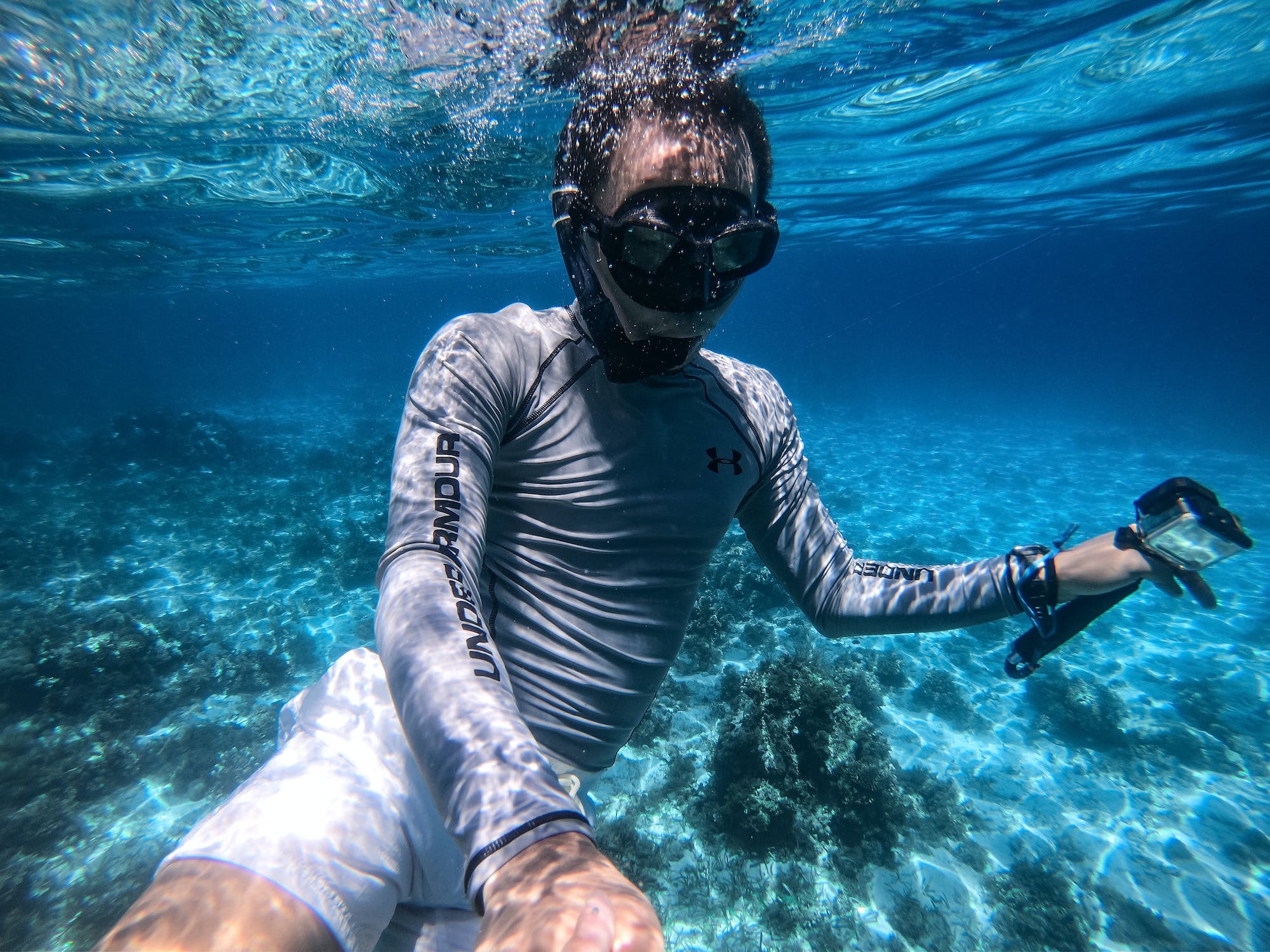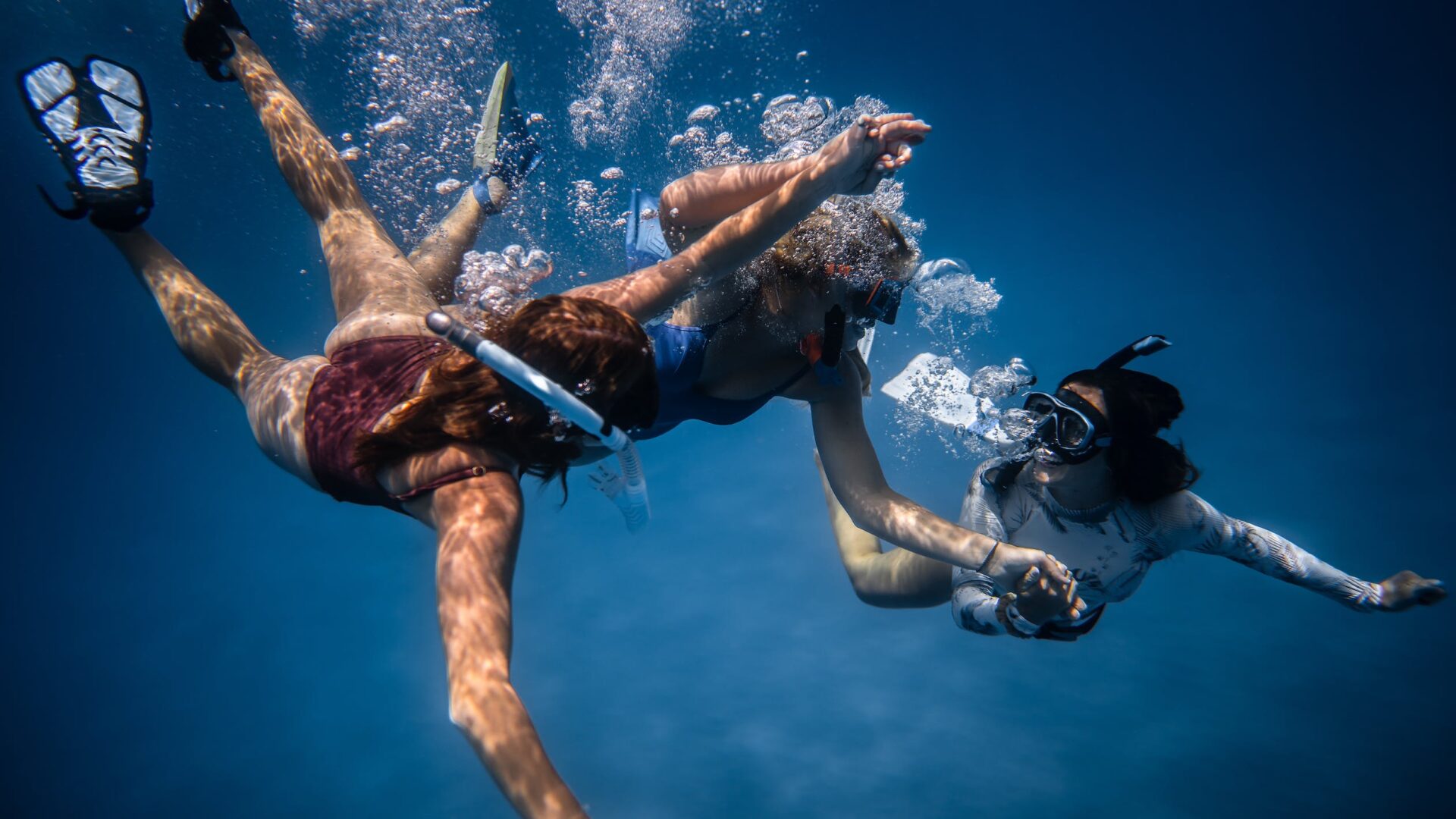One of the most essential items in any diver’s dive bag is a mask. When you start your dive experience, a high-quality scuba diving mask will likely be one of the first items you want to purchase. It’s important that it be both high quality and comfortable because while you’re exploring underwater, it’s basically your window onto the underwater world.
The primary function of a mask is to let divers see clearly and effectively underwater. In order to maximize its function, one must know how to properly maintain it. An poorly maintained and poorly fitted diving mask makes it harder for you to see things which results in greatly impacting your overall scuba diving experience. Having clear vision ensures safety and enjoyment underwater!
Choosing the Right Mask: A Quick Recap
Materials:
Generally, scuba masks are constructed from silicone and rubber. Silicone masks can withstand literally hundreds of dives since pure silicone is resistant to harm from ultraviolet light, salt, and chlorine. Moreover, pure silicone feels very soft. As a result, it will effectively seal up your face and lessen leaks. Masks with higher-quality silicone are more durable, comfortable when pressed against the skin, and last longer. Rubber masks on the other hand, are strong and resilient to tear. Rubber masks not only ensure strength but also flexibility. It’s important for you to try out different masks and make sure you pick a material that is comfortable as well as durable.
Tip: Higher grade silicon will feel softer and more flexible than lower grade silicon. It’s important to put your hands on a mask you are considering and feel it.
Lens Type:
 Single-lens and double-lens dive masks are the two generally used types. The two kinds are available in a wide variety of colors and designs. The body of the single lens mask is composed of flexible silicone or rubber, and the lens is directly attached to it. In double lens masks, two lenses are held in place by a plastic frame that is linked to a silicon skirt. Single lenses provide more uniform visibility, however double lenses allow the addition of corrective lenses, making them the best choice for divers with trouble with their vision.
Single-lens and double-lens dive masks are the two generally used types. The two kinds are available in a wide variety of colors and designs. The body of the single lens mask is composed of flexible silicone or rubber, and the lens is directly attached to it. In double lens masks, two lenses are held in place by a plastic frame that is linked to a silicon skirt. Single lenses provide more uniform visibility, however double lenses allow the addition of corrective lenses, making them the best choice for divers with trouble with their vision.
Fit:
The fit and comfort are the most important elements of a good scuba diving mask, just like when choosing any new piece of scuba equipment. Everyone has a distinct facial shape, therefore there needs to be something available for every diver, which is why there are so many various styles available. The most important feature of your dive mask is that it should make a good seal on your face to ensure comfort and effectiveness. Visit your local dive shop and try on all different types of masks until you find the right one for you that has a great seal and is comfortable.
Preparing a Brand-New Mask: The First Dive
Why new masks fog
A common issue with brand new masks is that they tend to fog. New masks feature a silicone coating on the glass, which is important to the manufacturing process and keeping the mask looking good for sale, but is detrimental to keeping a mask fog free.. The glass will condense into tiny droplets of water when heated, which will cause the mask to fog up. A thin silicone film forms on the mask lens during the production process. This silicone is resistant to any of the conventional de-fogging measures. This issue is annoying especially to new divers. Luckily, there are easy ways to remove this layer of silicone from your lenses at home..
Preparing a new Mask:
The simplest and safest method for cleaning a brand-new dive mask is to use toothpaste.. Grab some white, non-gel, non-abrasive toothpaste to use to prepare your mask and remove the silicone layer from manufacturing. Apply it liberally inside the mask, covering the entire surface of the glass, and scrub it with your fingers (don’t use anything other than your fingers). After you scrub the inside of the mask let the toothpaste sit for 30 min to 1 hour then rinse it off with clean, fresh water.. Cleaning your new mask is important to lower the likelihood of fogging. Although there are commercial mask cleaning products on the market, toothpaste is a far more affordable option that works just as well.
Tip: Try to choose a toothpaste that doesn’t contain bleaching agents – the simpler the toothpaste, the better.
The Burn Method:
An alternative to using toothpaste to prepare your new mask for diving and removing the silicone layer off brand-new diving masks is to use a flame. It involves bringing a flame somewhat close to the dive mask lenses. Use a lighter and hold the flame to the inside of the mask – keep it moving! This technique takes a little more experience and experimentation but is quite effective. You must use extreme caution to prevent the heat from harming the silicone or rubber skirt of your dive mask.
Tip: A lighter or a tapered candle works well for this trick.
Combatting Fog: Tips and Tricks
 Now that your mask has been prepared, you need to keep it fog free when diving using these tips!
Now that your mask has been prepared, you need to keep it fog free when diving using these tips!
Saliva:
Divers’ masks might still fog even after the chemical protective layer has been removed. Luckily, there is an effective, cheap, and affordable resource for everyone. Your own saliva. While some people might find this gross, it actually works. Spit on the inside of the mask and rub it around with your finger. The goal is to leave a thin layer of saliva on the inside of the glass.
Tip: Use this method right before the dive because spitting doesn’t work well if the mask dries out.
Commercial anti-fog products:
It’s easy to find specialized anti-fog products for diving masks on the market. Many divers find these commercial defogging chemicals to be effective because they are made specifically to coat a mask’s lens. A few drops of the defogging solution should be placed in the mask, which should then be finger-rubbed around before being briefly rinsed with fresh water. Do not wipe off the defog when rinsing the mask because the goal is to leave a thin film of the defogging chemical within.
Baby shampoo:
As an alternative to commercial defoggers, you can baby shampoo. Compared to conventional adult shampoo, baby shampoo is typically hypoallergenic and less irritant to the eyes. Simply spread it around, give it a few minutes to work, and then rinse it off thoroughly with water. Avoid rubbing, as we don’t want the water to remove the film that the shampoo left behind.
Tip: Not only is baby shampoo less irritating as compared to regular shampoo, it also smells better! Most baby shampoos have a “No tears” formula which is hypo-allergenic and doesn’t cause your eyes to sting.
Consistent cleaning:
Care and consistent cleaning throughout the time that you are using your scuba diving mask is the rule number one. Cleaning and basic maintenance are necessary to keep the mask clear, prevent it from fogging up, and make it safe to wear underwater.
After Each Dive: Keeping It Clean
Freshwater rinse:
Always remember to rinse your mask with clean water after each dive. To dissolve salt crystals that are stuck to the mask, warm water works best. Wash your mask thoroughly, to make sure it gets into all the small and tricky corners. Add a few drops of dish soap or baby shampoo.
Drying properly:
Keep your mask out of the sun, and store it in a cool, dry place apart from other equipment so it won’t get damaged. A dedicated storage box or bag provides protection and prevents the skirt from becoming deformed during storage and transport.
Avoiding direct sunlight:
Correctly storing your scuba diving mask can extend its usability. Always keep it out of direct sunlight in a cool, dry environment. The plastic on the mask may deteriorate in sunlight, becoming brittle, worthless, and flimsy. All of your equipment should ideally be kept in a dry, well-ventilated space that is out of direct sunlight and away from temperature extremes.
Long-Term Care: Ensuring Your Mask Lasts for Years
Regularly checking the skirt:
A tight seal between the mask and your face is made possible by the silicone skirt that surrounds the mask. After each dive, rinse the mask with fresh water and always make sure to check your mask thoroughly. Inspect your scuba mask regularly for any cracks, tears, or other damage.
Strap care:
The strap on your Scuba mask is important and checking it before you travel and then before each dive will help keep you comfortable and safe. Stretch out your mask strap and check for any fine cracks. If you find any cracks, replace the strap immediately.
Tip: Mask straps and bands that are exposed to sunlight develop cracks and are more likely to break when stretched.
Storing properly:
The original box is the safest place to store your mask. If you don’t have the original box, keep the mask somewhere it won’t get damaged or disfigured.
Annual check-up:
To ensure that it will function safely while you are on your dive, all dive equipment should undergo an annual inspection. If your equipment has been sitting idle for a while, it is extremely crucial that you examine it. Most manufacturers still require that their gear is serviced annually, or after 80 to 100 dives, whichever comes first. It is sometimes helpful to add some silicone grease to mask straps and skirts to maintain them and keep the rubber or silicone flexible.
Here is an helpful Infographic for you to check out about Equipment Maintenance
Common Mistakes to Avoid
Using household cleaners
Different chemical-based products can reduce the lifespan of your dive mask or any other dive gear or possibly entirely destroy it. For instance, solvents are likely to harm the plastics that most masks are made of.
Leaving in hot cars:
Don’t leave your equipment on cars or direct sunlight. This is because the sun will dry your gear fast, and the UV rays will break down rubber and fabric. It can cause your dive mask to fade, become brittle, and even crack completely.
Rough handling:
Your dive masks and other dive gear is your sole responsibility. Make sure to properly handle your scuba gear to avoid having to pay chunks of money for maintenance and repair. Never, ever drop your dive masks or gear onto a hard surface such as the floor.
Conclusion:
The most vital piece of scuba equipment you will ever have is your dive mask, helping you maximize your comfort while giving you the best view of the underwater world. Scuba masks are your window to the beauty of the underwater world, thus maintenance and proper handling are essential for efficiency and enjoyment.
If you have a proven maintenance tip for scuba diving masks or any of your dive gears, do not hesitate to share it with us in the comment section!
We have created an Infographic about Mask Care and it is accessible here!
Updated on: December 05, 2023


